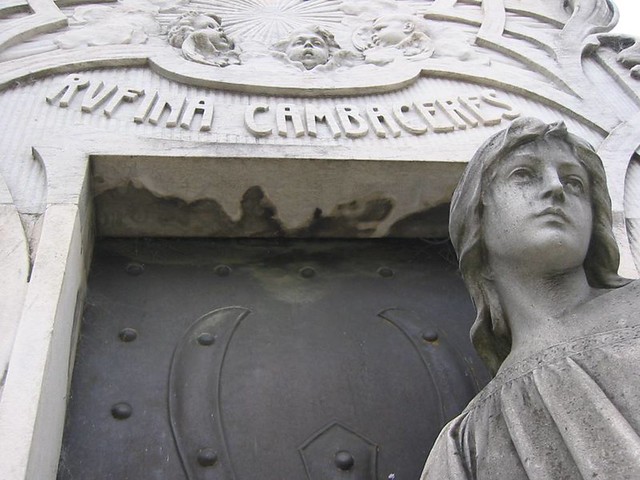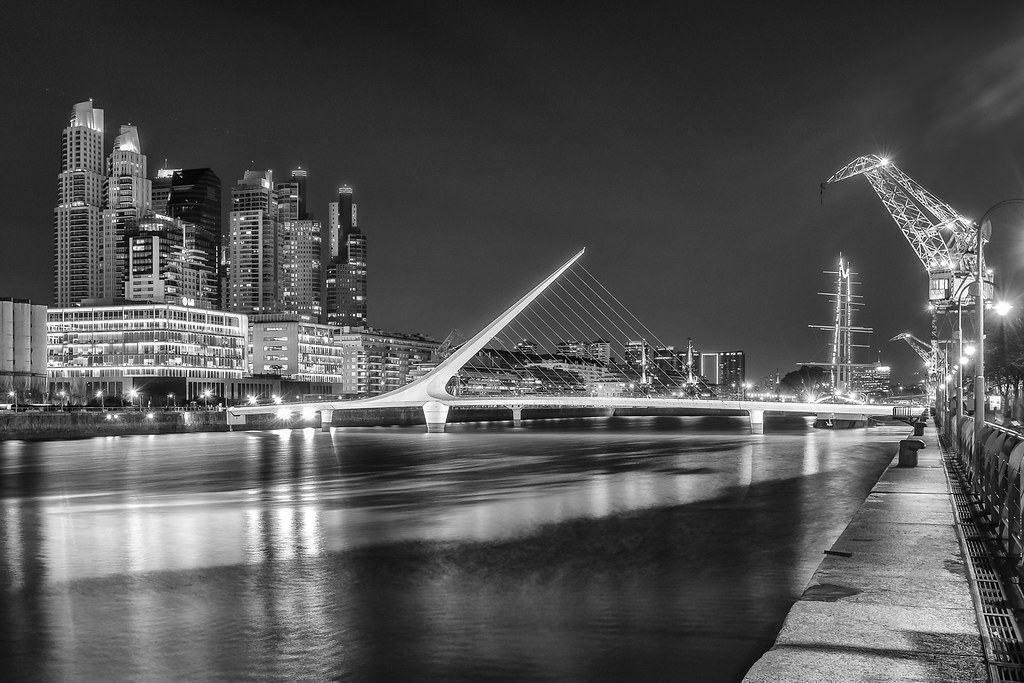Argentina is a country that has many attractions. Not only its beautiful landscapes, its tango, the rich meat and the good wine. It also has its legends and myths. This makes it a very entertaining destination for those curious and lovers of these stories.
This is why Buenos Aires is no longer only an attraction for those who want to experience the typical experiences of the city, but also for those who prefer to discover the hidden and mysterious part of the country’s capital.
There is everything. Legendary tragedies and crimes. Haunted mansions, cemeteries with nightlife. Bell towers that sound alone, spirits that circulate with chains through courtyards and parks. Embassies that asylum demonic spirits.
Buried alive

Rufina Cambaceres Bacichi. She was the daughter of the Buenos Aires writer Eugenio Cambaceres and the Italian dancer Luisa Bacichi.
Her father died in 1888 and Luisa was left a widow. Luisa later was in a relationship with other men, among them the future president Hipólito Yrigoyen. On her 19th birthday, a friend of hers confessed to Rufina that Luisa was also a lover of her own boyfriend. Trembling, Rufina went to get dressed, and she did not leave the room when they rushed her, and when she opened the door, Luisa found him lying, without a pulse or breath. That night, she was buried in the Recoleta Cemetery, already presumed dead. The strange thing was that she was later found outside the coffin, which is why many suggest that she suffered a bout of catalepsy, and a heart attack upon waking up in a mausoleum in the middle of the night.
Although her remains are in the mausoleum until today, there is not enough evidence to verify what really happened.

The bad light
This is a legend that originates mainly in the center of the country, especially in the countryside. But over time, many claim to have lived in the same city.
When we speak of “bad light” we mean a bad omen that is also known as the “Devil’s Lantern” or the “Mandinga’s Lantern”, all referring to the “Devil’s Lantern”.
The bad light, as its name implies, is a light that appears floating in the air and that is nothing more than the lights of a soul crying in pain. It tends to appear and be seen during the driest times of the year. Many claim that, in addition, it emits toxic gases, a product of decomposed bones, which is fatal to living beings.
Others claim that the light comes from an Indian ceramic urn containing human remains and that whoever finds it will discover buried treasure.
Legend has it that many men, flooded with intrigue and ambition, when they saw the light have tried to reach it, only getting close to their fatal destination, death.
The lady in white
Legend has it that Luz María García Velloso died in 1925, at just 15 years old, of leukemia. Her remains are found in one of the vaults of the beautiful and mysterious Recoleta Cemetery. There you can see a statue of a beautiful girl, dead in her bed. They say that the heartbroken Luz María’s mother slept for months at the foot of the vault.
The legend is about a young boy who meets a beautiful girl, whom he invites for dinner and drinks. An almost ideal date could be said. Late at night, when the temperature had dropped enough, he lends him her coat while they finished having a coffee.
It is the next day that, with the excuse of recovering her coat, the boy returns to the girl’s house to see her. Cared for by his mother, he learns the terrible news. Her daughter was long dead and her remains were found in a vault in the Recoleta cemetery.
Stunned, the boy goes to check what the woman had told him. He arrives at the cemetery and when he stands in front of the vault, he cannot believe what he sees. I take it out of her on it.
There is no certain ending to man’s destiny. Some say he lost his mind, others that he simply took his own life. They say that for years, young men avoided seducing girls on the corner of Vicente López and Azcuénaga, the lady in white’s favorite place.
The eternal festival of the Palace of the Bugs
This palace, named for the gargoyles on its façade, was built in 1910 by an Italian man named Rafael Giordano. It is located in the neighborhood of Villa del Parque, at the height of 3220 Campana street.
He had decided to build the palace as a gift to his daughter, on the occasion of her marriage. Everything was happening as planned. On April 1, nineteen hundred and eleven, the palace hosted an incredible celebration, full of music, dance and merriment.
However, at the end of the banquet, the newly married couple left for their honeymoon in their car. All the guests were watching and saying goodbye from the windows of the palace, when suddenly everything collapsed. When crossing the tracks, the car was hit by a train, causing the immediate death of the young lovers.
The legend actually begins in this part. The father, destroyed by the fatal event, ordered the palace closed and emptied, leaving it forever abandoned. Legend has it that there are several nights when music is heard and people are seen dancing in the hall of the great abandoned palace.
The mystery could never be solved, since those curious who tried to get closer those nights, contracted strange diseases, which did not allow them to continue investigating.
The dead-end labyrinth of Parque Chas
They say that one of the most dangerous walks is the one found in the blocks of Berna, Marseille, The Hague and Geneva streets in the Parque Chas neighborhood. Anyone who dares to go around will appear anywhere else in the neighborhood, except where they should.
This legend tells that in 1957 a group of French explorers who were in the city accepted the challenge. Their luck was not good, and they were unsuccessful. They appeared in the neighborhood of Villa Urquiza, more than three kilometers from where they had started the journey.
Years later, a Catalan exploration that visited Buenos Aires. They organized into two different teams and walked in the opposite direction with the idea that they would meet in the middle. They also failed. After several hours, one of the groups appeared walking behind the other.
Says the writer Alejandro Dolina, who speaks of this characteristic neighborhood for its difficult layout of circular streets and concludes by saying: “Actually, it is advisable not to go near Parque Chas.”
The Church of Santa Felicitas
This is perhaps one of the most famous legends of Buenos Aires. The ghost of Felicitas Guerrero de Alzaga. A woman who at 15 had married an older man, with whom they had two children.
The children died as children and by the age of 26 she was already a widow. She however she was still beautiful and now a millionaire. Legend has it that her love was disputed by two important young men of the time, Enrique Ocampo and the rancher Sáenz Valiente. But Felicitas chose for the second. Ocampo, angry and very angry, asked to see her before her wedding.
They argued and the man shot her dead on January 30, 1872. It was never known what happened next to the murderer. Despite this, the family of the deceased girl ordered to build a tribute to her. The Church of Santa Felicitas at the back of the house. Currently today is the Plaza Colombia.
Legend has it that Felicitas can be seen walking through the church, while she cries, every January 30th. At the time of the first restoration of the church, the architect made a discovery. All the angels at the front of the church had their right wing down (while Felicitas had been shot over the same shoulder). Also the bell tower usually rings alone.














